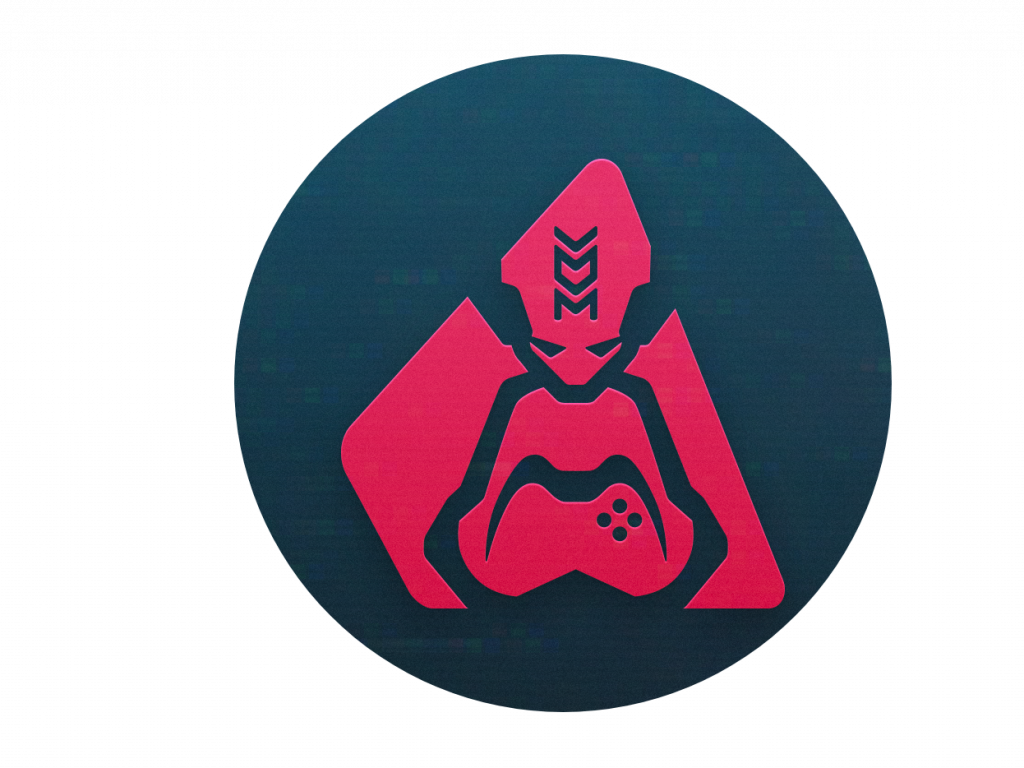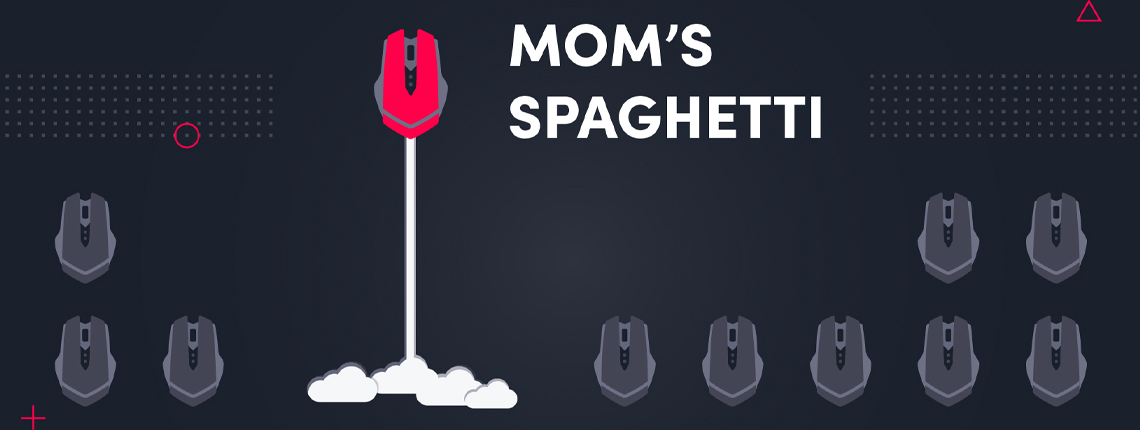Play smarter, not harder.
Ahhh… so cringey… so cliche… but so underrated and important.
This short phrase is like a mantra here at MADMONQ because, well, we’ve done our homework.
We’ve talked with many pro players and coaches and analyzed their routines and training methods. And our findings?
Simply put, thinking critically about how you play will take you further than brute forcing it through hours and hours of marathon gameplay.
Today we want to give you the tools to do it yourself.
Truly excelling at any game takes loads of practice. You need to put in the hours, days, and weeks of learning the game backwards, forwards, inside and out. No exceptions. We all know this.
But after a certain amount of playtime, your improvement will inevitably slow down. As your practice becomes empty repetition, you start to wonder… am I actually getting any better?
Good question. Probably not.
At least not as fast as you could be.
A really smart guy with cool hair said it best…

“Insanity is doing the same thing over and over again, but expecting different results.”
Albert Einstein
Actually, he probably didn’t say this (fact-checking FTW), but the hard truth remains: if you really want to improve and surpass your opponents, simply playing more won’t get you there.
Many players make this mistake and end up getting stuck or “plateauing” instead of embracing one simple fact: it’s time to start playing smarter.
In this multi-part series, we’ll go through how to analyze your game, as well as how to use what you find to push your game further and in a lot less time.
Finding and Understanding your “Edge”
The first step to drastically improving your performance is realizing one thing: trying to be good at everything equates to being truly excellent at nothing.
On top of that, an all-around training style eats up way more time than a specialized one.
That’s why instead of throwing tons of empty hours into a game, truly elite gamers are constantly assessing their gaming style and fine-tuning what we call their competitive edge or, for short, CE.
Your CE is a combination of different factors that make your gameplay unique and give you an advantage over other players.
Today’s mission: helping you find yours.
For starters, we need to clarify one thing. As you spend more time in the game, you are bound to perform certain activities faster, easier and with fewer mistakes. This will improve your game, but it will also be true for nearly everybody. It isn’t unique. Without a certain group of skills to pursue, it’s a safe bet that you will improve at about the same rate as everyone else who is doing the same thing.
We’re looking for qualities of your gameplay that make you unique. The goal is to get so good at these that your opponents will start crying about you having an unfair advantage. Only it’s not unfair – you’re just thinking about the game differently. More intelligently.
Now it’s time to find those qualities, understand them and start nurturing them. Here’s a great tool and exercise designed to help you do exactly that.
“80/20” YOUR GAME
On the path to isolating your competitive edge, the 80/20 rule is a good place to start. Before you start applying it to become a better gamer, though, we recommend getting to know the concept itself first.
Also known as the Pareto Principle, it states that a small amount of the things you do create the largest impact (whether good or bad).
It’s been proven to be scarily accurate in economics, athletics, software development, and gambling, and it works for gaming too.
For pro gamers, this principle boils down to three parts:
- identifying positive behaviors → the things under your control that contribute to success
- identifying negative behaviors → the things under your control that lead to failure
- (most important) prioritizing → taking what you find in parts 1 & 2, and isolating the highest impact behaviours – those that are most responsible for positive and negative outcomes.
This final step is most important for two reasons: it narrows down your list of priority activities to the ones that deliver the greatest results (Pareto’s 20%), and at the same time shows you the less-important activities that you don’t have to (and shouldn’t) put your time and energy into developing (the remaining 80%).
By the way, don’t get too hung up on the numbers – the 80s and 20s we use in this article are just orientational. The main takeaway here is to identify and improve the things that truly affect your game.
Here’s a basic example of what we mean:
Sniping
You’re wicked at tracking and your aim leaves most of your opponents rage-pounding their keyboards. If you can get your hands on a sniper rifle, your odds of winning the game skyrocket.
At the same time, when you snipe a lot, you tend to camp, making you vulnerable to grenades and getting flanked. Camping leads to a huge number of your losses.
In the same game, the vehicle you use to travel around doesn’t really affect if you win or lose, because any vehicle draws too much attention to your movements, anyways. In this case, your vehicle use skills do not contribute heavily to your ability to win.
In this example, the sniper rifle is one of many weapons in the game, but choosing it is a behavior that leads you to the most victories. It’s what we call a “positive 20”.
Along those lines, because you like to snipe, camping is one of the things you do that most heavily contribute to you getting fragged. We call this one, yup, you guessed it – a “negative 20”.
The way you use a vehicle doesn’t ensure a win or a loss. It represents the real enemies to your progress: the parts that aren’t impacting your game that you are needlessly focusing on anyways. Whether positive or negative, we call these “80s”.
Chew this over and make sure you have a solid grasp of the concept before jumping into the next section.
Once that deer-in-the-headlights look is gone, let’s start putting the 80/20 rule to use.
APPLYING 80/20 TO YOUR GAME
In most cases, the activities that bring the most benefit are obvious to you. Creating a clearly defined list of which those are (and which they are NOT) will help you isolate the highest-value skills to focus on.
Grab some paper and a pen to write everything down.
Let’s start with the positive stuff:
- Make a HUGE list of all the things that you can do in your game of choice to achieve success. Study some winning matches from start to finish. Think about roles, actions, micro, aiming, picking your battles, decision-making, cooperation, speaking to teammates, strategy, drafting, map awareness… You get the idea.
Don’t spend forever trying to build this list yourself. Write down all you can think of, then seek help. Go further by studying podcasts and videos of pros talking about game strategy.
Go further by studying podcasts and videos of pros talking about game strategy. - Now go through that list of things you do and identify a few of them that contribute most to your wins.
= This shortlist is your list of actionable aspects to focus on when training to ensure the most success → your “positive 20”. The rest of that large list is the stuff that doesn’t serve you well to focus on → your “positive 80”.
When you’re done with that, move on to your “negative 20”:
places where your playing style leaves you vulnerable and hurts your chances of winning. That means studying games where you lost and looking for the main reason(s) why. This one can be a bit trickier and even brutal at times. Just make sure you’re honest with yourself. Excuses won’t do anything for your progress and determining why you lost a game will benefit you far more than identifying why you won.
PROTIP: Look for turning points!
Pay close attention to those moments where you were sure you were going to either win or lose, but then did something that quickly turned things around for you. Games with big upsets like these are usually driven by one (or a few) of your 20’s.
And voila! You now have two sexy lists of 20’s (places to invest your time and improve the most) and two 80’s (the parts that would be a waste of time to practice). The goal here is to identify the highest-impact behaviors, roles and decisions within the game and figure out how to invest your time better. And this isn’t a one-time thing. Your game is constantly evolving, so make sure to analyze it this way on a regular basis (at least once a month).
Get a 2nd opinion (and a 3rd, and 4th…)
Making 80/20 lists is mega useful, but getting some outside opinions about your performance from players you trust is just as important. This provides perspective – if they are noticing it, there’s a good chance that it’s having a significant impact on your game.
The more players/friends/teammates you talk to about this, the better. Write down what they tell you and make sure they know to be brutally honest.
Bring extra tissues, just in case it gets savage.

Working with the lists
With any luck, you’ll see a lot of overlap between your “20s” and the evaluation from your friends. If they’re a complete match, awesome! You’ve defined what is likely a very solid CE.
Now take your two shortlists and make a checklist out of them to constantly remind you that they are what you should be focusing on, and nothing else.
If your lists don’t match up with your friends’, then someone somewhere isn’t seeing the whole picture. To move forward, look at where the lists differ and ask your friends for examples of what they mean while you look for examples that support the items on your list.
This is not an easy exercise and the concept of CE may take some time to fully sink in. But boy, it is worth it. If you’re still not 100% sure of your CE, don’t worry, it’ll come. The most important thing is that you’ve begun the process of figuring it out for yourself. And this alone already gives you an advantage over others.
Congratulations, now you’ve got the insights you need to create a training plan built on all the parts of your game that benefit you most and avoid those that don’t. This is the foundation for skyrocketing your performance to the next level.
Stay tuned for PART 2 of our series:
↓
CULTIVATING YOUR COMPETITIVE EDGE AND ACCELERATING YOUR IMPROVEMENT THROUGH THE ROOF.

Here’s where we like to play…
Instagram: instagram.com/madmonq
Facebook: facebook.com/madmonq
X (Twitter): twitter.com/madmonq
Twitch: twitch.tv/madmonq
YouTube: youtube.com/madmonq
TikTok: tiktok.com/@madmonq/
Discord: discord.gg/madmonq









Comments
Leave a Comment